During our time in Johannesburg, we also wanted to take a trip to the Soweto Township. After our long journey the day before, we had tucked ourselves into bed and caught up on a few hours of sleep. Thanks in part to the comfortable beds in our Curiocity Hostel, we slept like logs. The rest of the hostel was also really great, but more on that later.
The next day was supposed to start with the program. Since we had only read good things about the tours, we booked one directly at the hostel. The guys and girls who run the place were all relaxed, so it could only be good. We decided on a half-day tour* to what is probably the most famous township in all of South Africa – the South-Western Township, or Soweto for short.
A tour of the townships? Guilt!
We were unsure about this tour until the very end. As “rich Europeans,” should we really wander through this poor region? What do the locals think of us? Do we look like gawkers? Do they perhaps feel uncomfortable having curious, unknown people constantly in their home? Do they even feel like animals in a zoo? Aren’t we, after all, just some curious onlookers stopping by to take a few pictures? You ask yourself various questions and question the whole thing.
But we also came to South Africa to learn more about the country, its history, and its people. We are curious about foreign cultures and their ways of life. You have to understand things in order to be able to support and change them. Furthermore, a portion of the tour funds is used to support or even realize projects and institutions in the township.
That also reassured us. We were told that the locals here don’t have a problem with it. In fact, they think it’s good when people from other countries come all the way to delve into the country’s past and take an interest in them and their problems. And that’s exactly what we wanted to do…
A Short Digression into History
The Soweto Township is synonymous with Black resistance during Apartheid. But what does Apartheid actually mean? It’s about racial segregation in South Africa. For a long time, the country was subject to a system of injustice and oppression of the non-white population (41 million) by four million whites. Discriminatory laws, exploitation, violence – the white minority oppressed the black majority.
For example, blacks were only allowed to perform menial jobs, live only in certain areas, and were not allowed to associate with people of a “different race.” Whites and blacks were not allowed to use the same toilet or live under the same roof. Different passports were introduced, and if a black person didn’t carry a passport, they had to spend at least one night in jail.
Black organizations and parties were banned. And anyone who belonged to one of them was punished for it (including Nelson Mandela). Beyond that, they had virtually no rights. There were numerous such contemptuous laws. And so there were many townships to resettle (segregate) the colored, black, and Indian populations.
A township is always associated withpoverty, violence, and drugs – and in many places, this is still the case. But a lot has changed. It’s no longer as dangerous as every travel guide says. However, the crime rate is disproportionately high, as in any other such suburb. So, don’t just wander through the townships alone; it’s better to book a guided tour.
Soweto – South Western Township
Soweto (South Western Township) is a separate district of Johannesburg, just 10 kilometers from the city center. Around 4 million people live here, some still in very poor conditions in simple, self-assembled tin shacks. Others live somewhat more comfortably in smaller houses. Soweto has a major hospital (the largest in the world) with more than 3,200 beds and almost 520 doctors. There are also 800 schools and almost 1,200 kindergartens here alone. Almost 95% of school-age children attend school—a true achievement for these times.
Today, even politicians and wealthy young millionaires live in Soweto in modern, larger houses. However, these houses more provocatively separate themselves from the real Soweto. Barbed wire walls, modern cameras, and a private security service are intended to ensure security. But these “rich” are only an exception. Unfortunately, more than 90% of Soweto’s residents are still among the poorest of the poor.
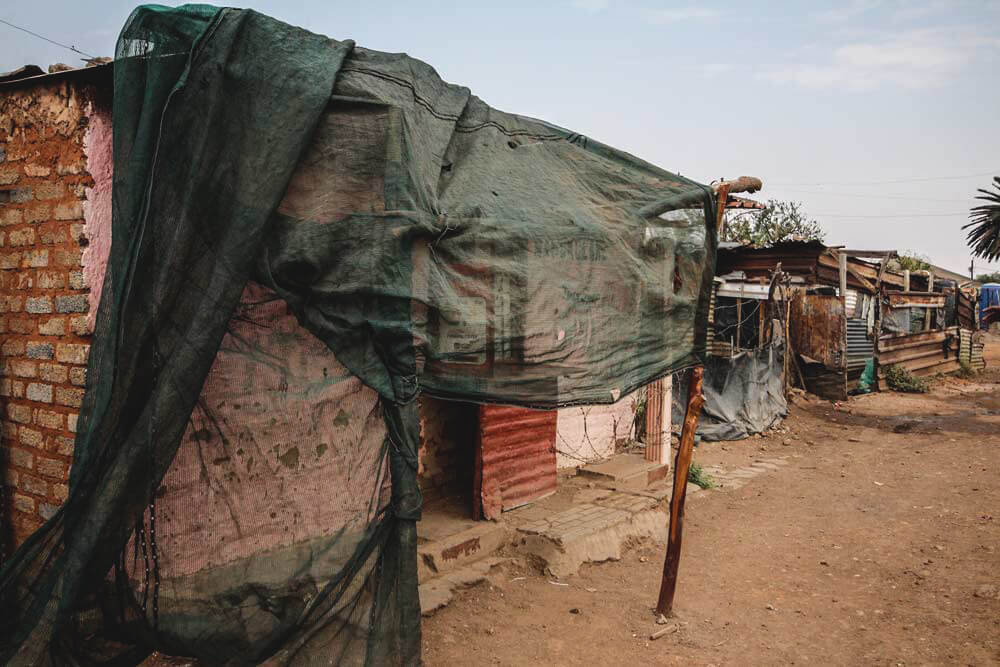
People here pay neither rent nor electricity nor anything else. Everything is free, as far as possible. Nevertheless, one must not forget the conditions under which people live here. Sometimes you share a room with five other people, and there’s only a small kitchen, and that’s about it. Dirt, garbage, problems with hygiene and water supply, and violence are unfortunately still the order of the day here.
Soweto Township Through Our Eyes
We set off for Soweto around 10 a.m. in a small bus. The route led past a lot of garbage, lots of people on the streets, and many simple residential areas. It almost looked like the scene of a battle. It was so dark, dreary, gray, and lifeless. The bus stopped; we had arrived. We got off the bus and followed our guide. He led us through part of the township. We walked through narrow alleys between the tin shacks, a few children following us.
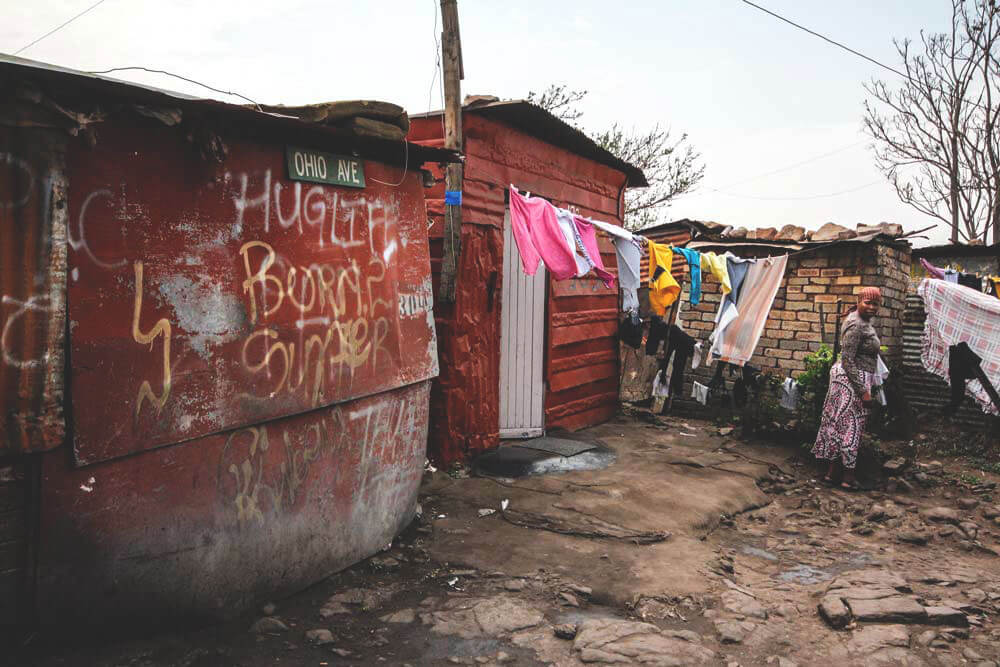
We felt uncomfortable, but it was still interesting. At the same time, it was also shocking how the people here have to live. We were spared such images in Germany. And suddenly we were sitting in the middle of the living room of a 31-year-old man. He told us that his great-grandparents had lived here and that he himself grew up here with his father. He proudly showed a photo of himself when he was just a few months old, sitting in front of his “house.”
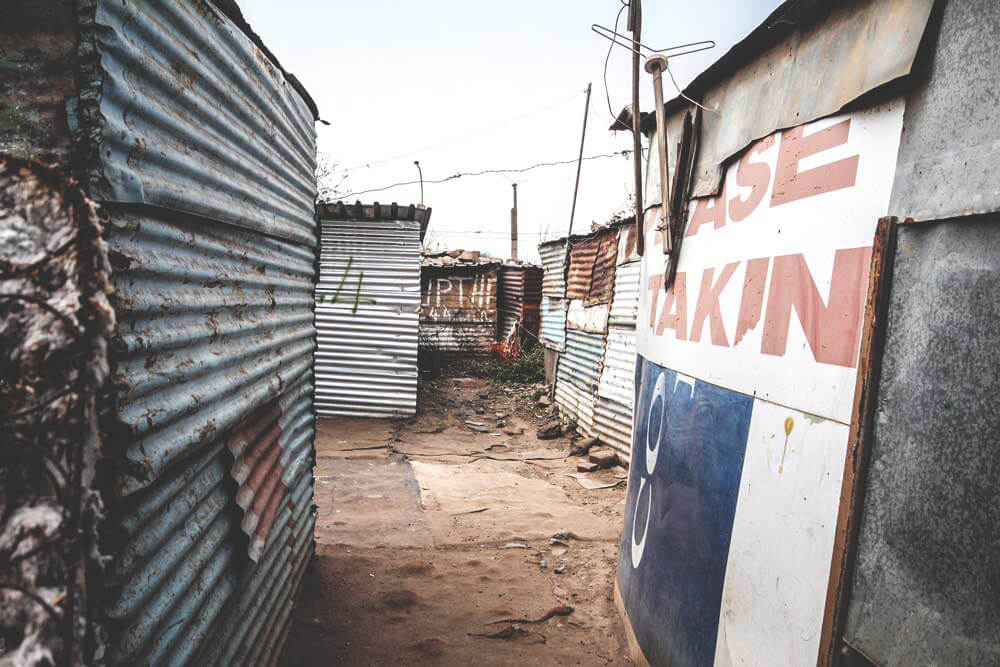
Soweto Township – From Generation to Generation
The tour continued. We walked past simple, half-collapsed tin shacks and stopped in front of a kiosk. Here, you can at least buy the bare necessities. Small children repeatedly ran past us, wide-eyed. Later, we stood in front of the “Little Rose” facility. This facility is located in the poorest part of Soweto and primarily cares for young children and young people. The aim was to create a better environment for them, far away from HIV, crime, disease, and loneliness. Children should learn something, play, and be surrounded by other children.
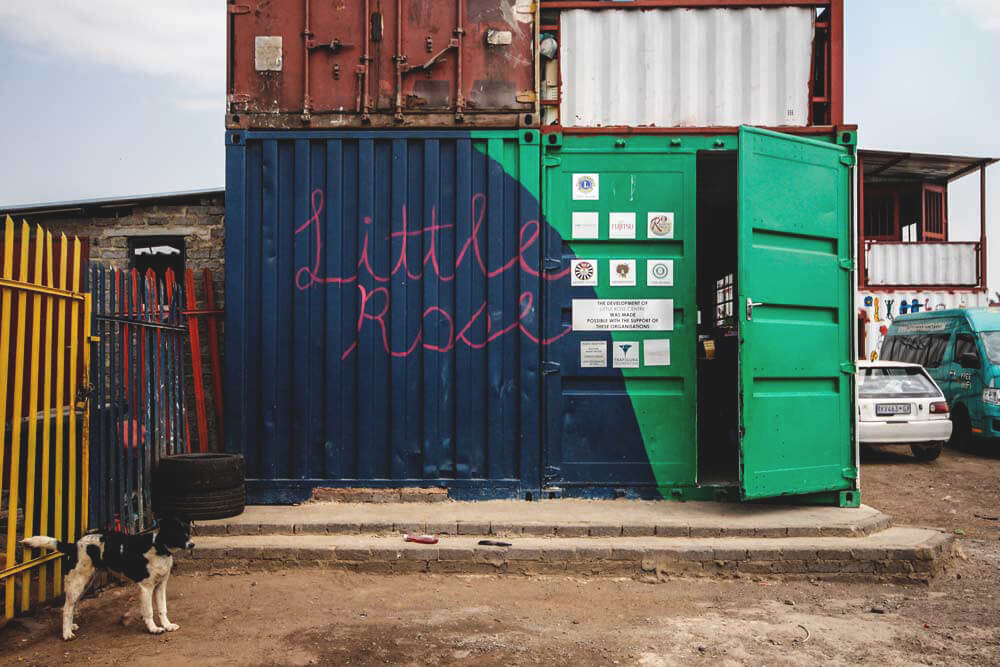
In 1993, a play group was started with 40 children to support children’s early development. Today, there are almost 140 children in this facility, belonging to various age groups. There are the very young, aged 1-3, then there are the older children, aged 4-6, and then the oldest group. Some are always here, others only come in the morning or after school for meals, to do homework, or to pursue other activities.
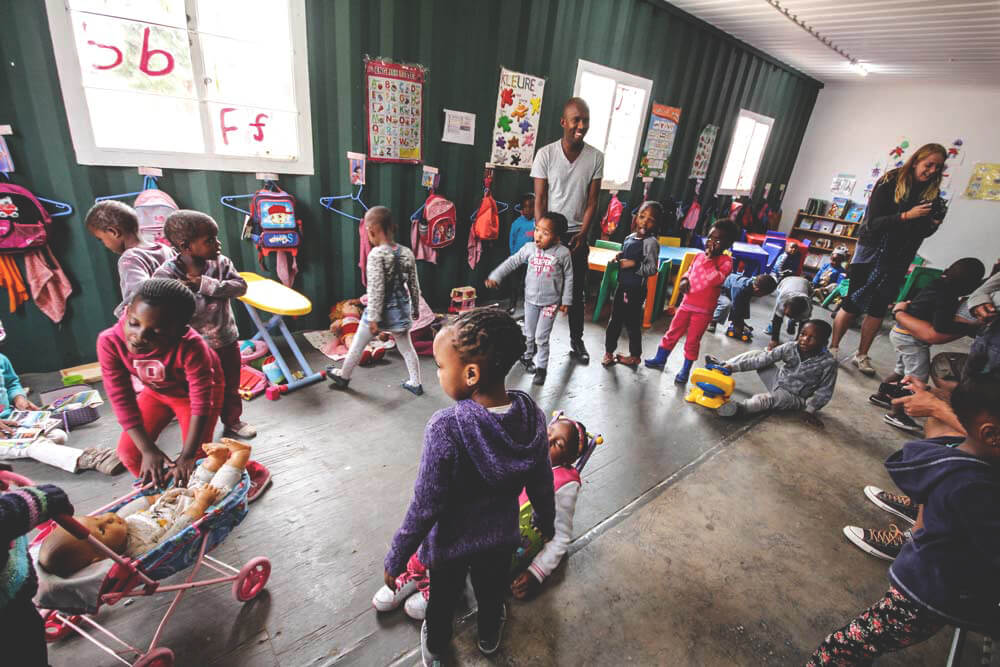
We looked around the facility – everything was made of containers, stacked side by side and on top of each other. There were plenty of toys and even a computer room with more than 10 computers. Here, the kids are trained and taught the most important things. The children can live carefree and have fun here – far away from all the problems.
The children immediately came and wanted to play with us. They all wanted to look through the camera, take a funny photo, or just be thrown through the air. They’re kids, after all! It was nice playing with them, even though you always had to think that the children had it much worse than our children in Germany. Reality always quickly catches up with you.
Children have the right to be “children”!
But at least the kids here in the center can be a little more “children” again, without adult obligations and laws. They laugh, scream loudly, jump from left to right, and are simply “children” – as they should be! After visiting the center, we continued on by bus. We stopped at the Hector Pieterson Museum in Soweto. Here we learned a lot more about the past and about Soweto. In 1976, thousands of students demonstrated here in Soweto – initially peacefully.
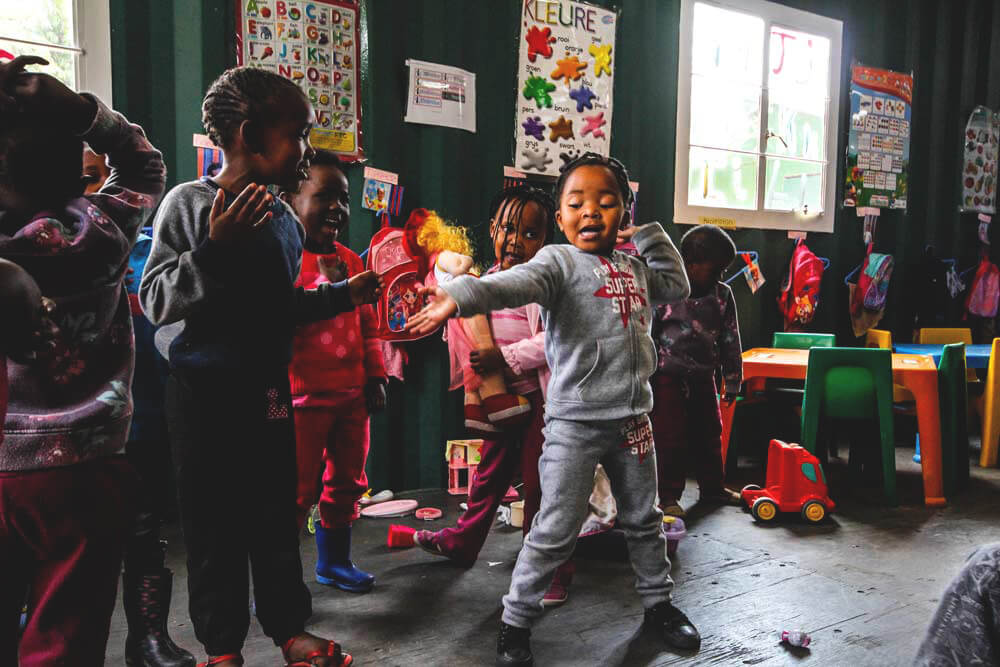
People didn’t want Afrikaans to be introduced as the language of instruction in South African schools. They wanted to be taught in English. Moreover, Afrikaans was considered a “white language” at the time. And imagine if you had been told back then that you now had to be taught in French or Russian? By teachers who didn’t even speak those languages. Could that even work?
Came in peace, lost their lives!
But the demonstration ended in chaos. White police officers opened fire and accidentally killed a Black student. This student was Hector Pieterson. From that point on, violence and riots were the order of the day. Photographer Sam Nzima took a photo that went around the world and caused quite a stir. The picture shows the dying Hector. He became a symbol of an uprising of the Black population against the apartheid regime.
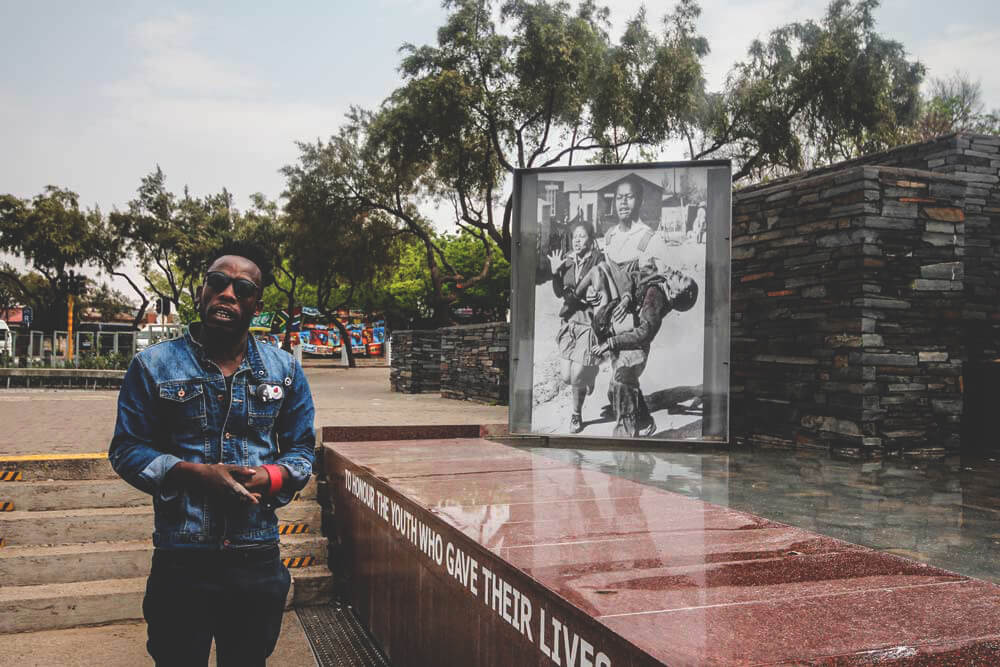
At first, we didn’t understand everything, but we still looked attentively at the museum exhibition. Only at the end did we have to ask a few more questions to really understand everything. That same evening, we watched a YouTube documentary about it. More than 500 young people and security forces died in this demonstration. And all because people didn’t want to be taught Afrikaans. Horrible! It took almost six months for the police to largely end the uprising.
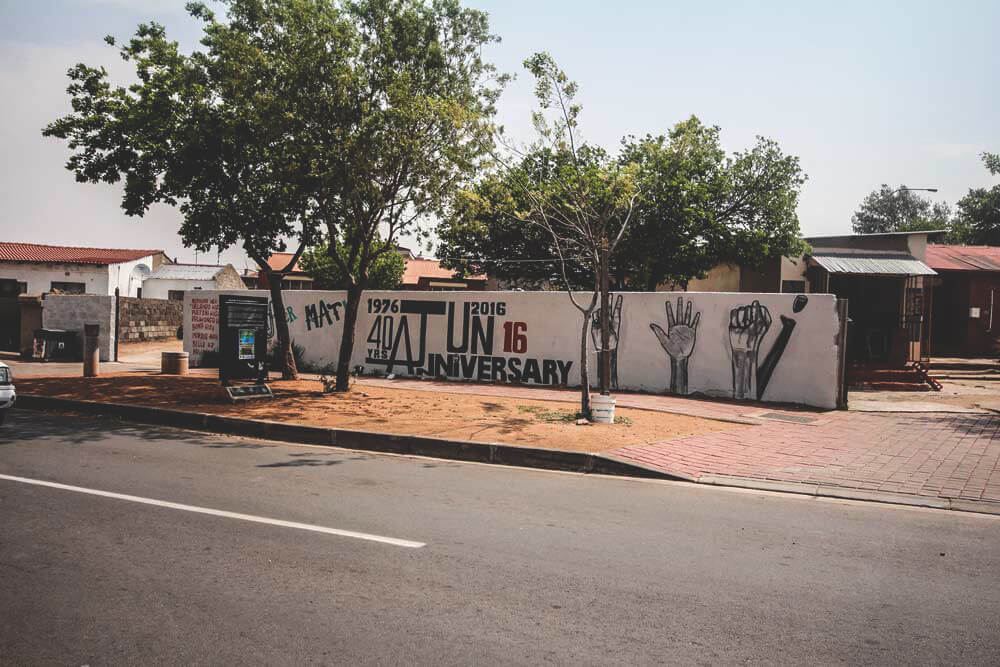
The museum opened on June 16, 2002 (the anniversary of Hector P.’s death) and is intended to commemorate the events surrounding this uprising. Nelson Mandela inaugurated the Hector Pieterson Memorial at that time. And did you know that there is a school in Berlin-Kreuzberg named after Hector Pieterson?
The Striving for a World of Free & Equal People
After the tour of the museum, we strolled through the streets of Soweto. Jazz, our guide, showed us Nelson Mandela’s house. He lived here on Vilakazi Street from 1946 to 1962. In 1962, Nelson Mandela was imprisoned. He spent 27 years behind bars, even though he was “merely” fighting against racial segregation. He is by far the most well-known fighter and symbol of the overcoming of apartheid. On February 11, 1990, Mandela was released and immediately threw himself into work to achieve all the goals he had set for himself four decades earlier.
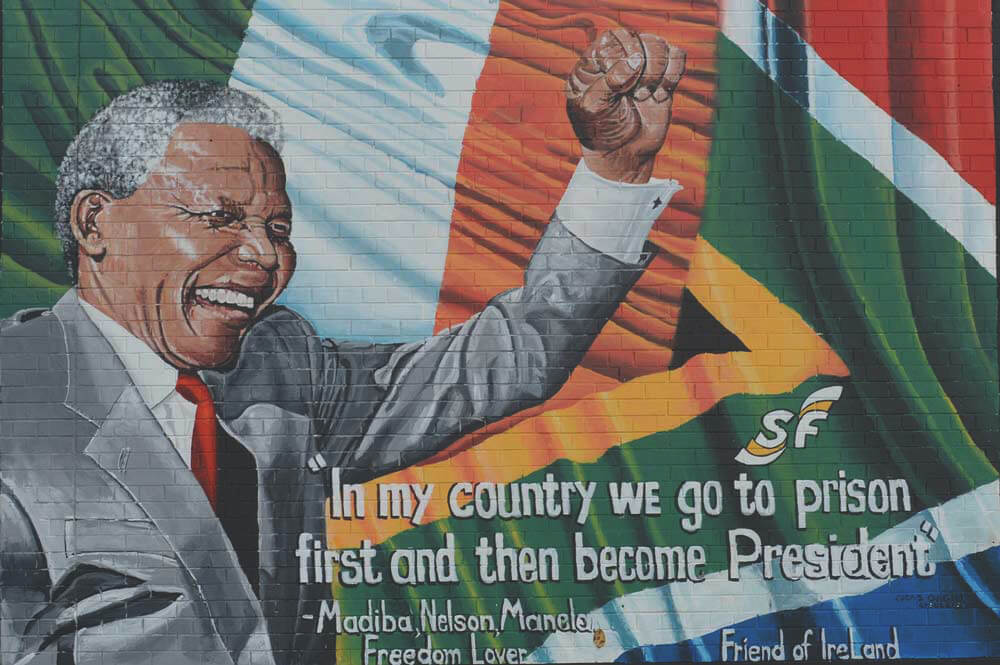
In 1993, he received the Nobel Peace Prize, and in 1994, he became the first president of South Africa (“Madiba”) to be elected through universal democratic elections. In 1999, he retired, but continued to spread his ideas of liberty, equality, and fraternity. On December 5, 2013, Nelson Mandela died surrounded by his family. A nation lost its greatest son, according to President Zuma.
Mandela’s House and Traditional Beer
After walking past Mandela’s house, we stopped at “The Shack.” Here we drank traditional beer called “Umqombothi.” Hey, you should hear how they pronounce that here. It’s a total tongue twister. They click their tongues when they pronounce it. Totally funny! The packaging reads: “Don’t Drink and Walk on the Road, You May Be Killed.” We asked our hostel boys to explain what that means.
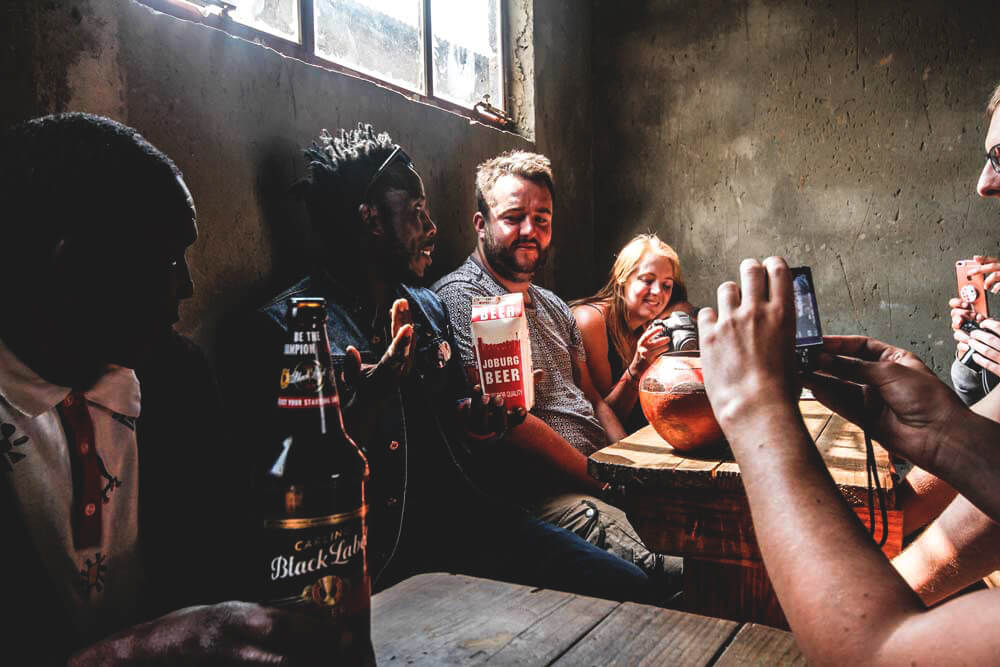
In South Africa, most people die in car accidents. But not because they’re sitting in a car, but because they’re pedestrians. And so they turned this fact into their slogan: “Please be mindful. If you drink, enjoy it but watch out you can be killed on the road.” So be careful when drinking and running, you could be killed on the street!
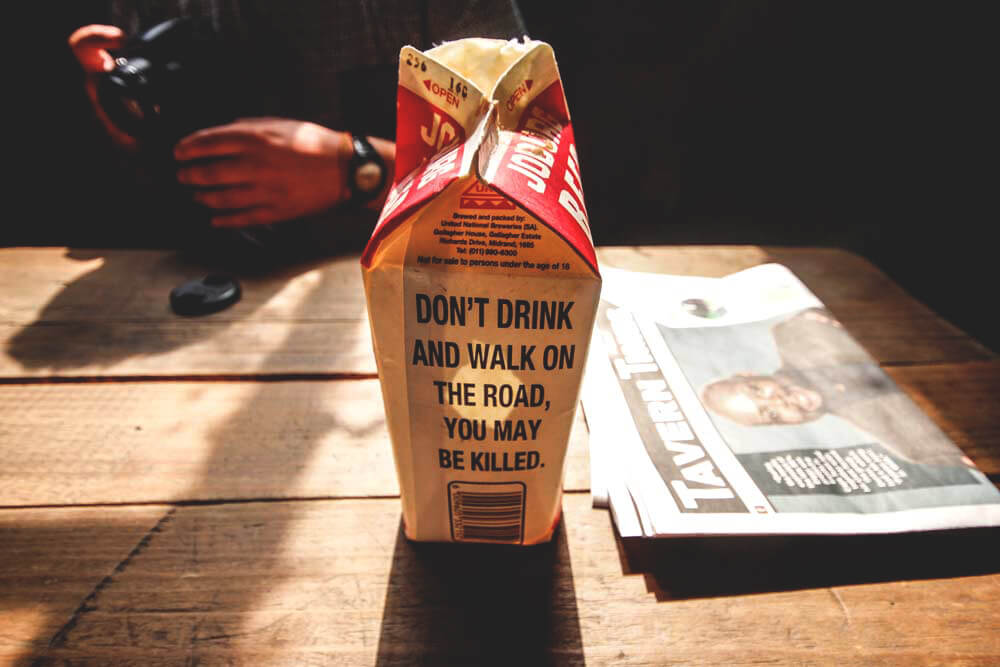
Legacies of the 2010 World Cup
With even more insider knowledge, we made our way to the FNB Stadium in Johannesburg. It was renovated and spruced up for the 2010 World Cup. While the stadium in Cape Town is hardly used anymore these days, the stadium in Johannesburg is still in use. Things are set to get really exciting here when the two hometown clubs, Kaizer Chiefs and Orlando Pirates, meet.
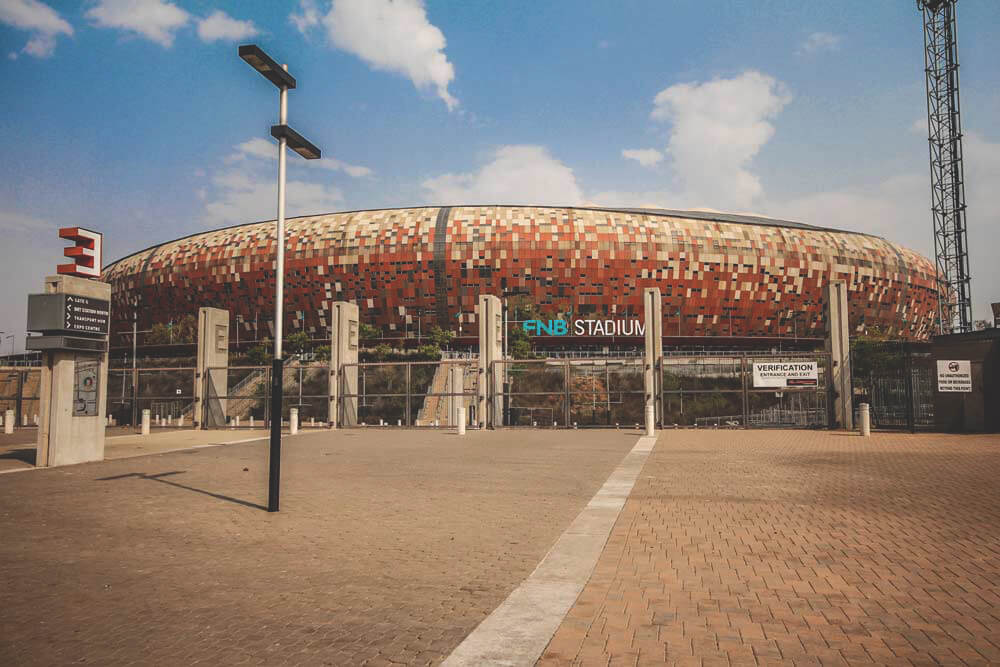
The FNB Stadium has almost 95,000 seats (13th place worldwide) – just check it out! The Signal Iduna Park in Dortmund has almost 82,000, the Allianz Arena in Munich and the Olympia Stadium in Berlin have around 75,000 seats. And did you know that the largest stadium, with almost 114,000 seats, is in North Korea?
Our half-day tour then ended with a view of the city skyline. Up here on the mountain, we saw some believers praying to God. They believe that up here on the mountain, they can be a little bit closer to God. Jazz showed us “Ponte City,” the tallest apartment building in Africa (173 meters high).
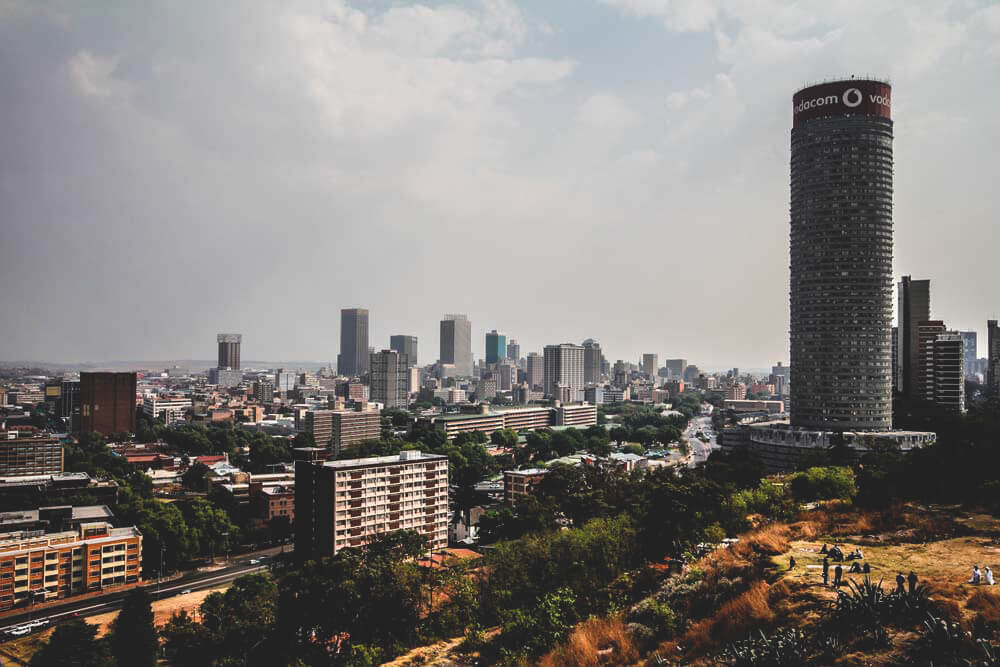
Shortly after the end of apartheid, more and more gangs moved into this building. Violence, insecurity, HIV, and prostitution made this neighborhood a truly unpleasant place. Even today, the building must be secured with high security measures (entrance controls, fingerprint scanning).
We got back on the bus and drove back to our hostel. For us, choosing this tour was definitely a good choice. In those five or six hours, we learned more about South Africa, Johannesburg, and Soweto than we ever could have imagined. We highly recommend this tour to anyone who wants to delve into the country’s past.